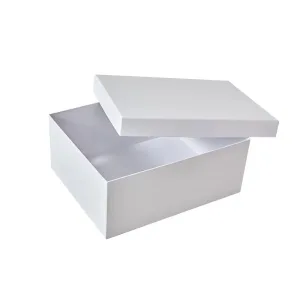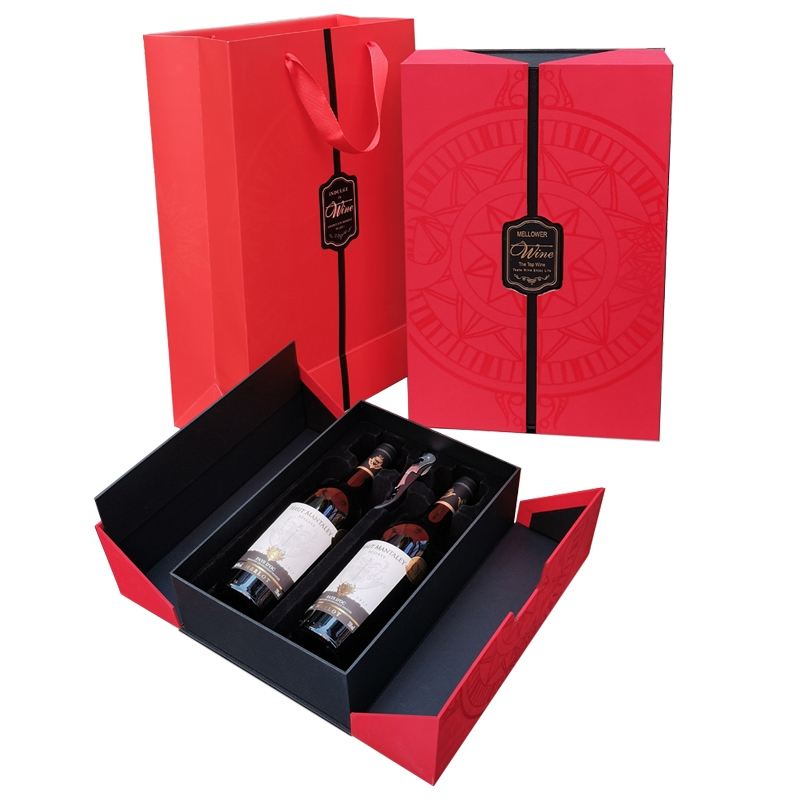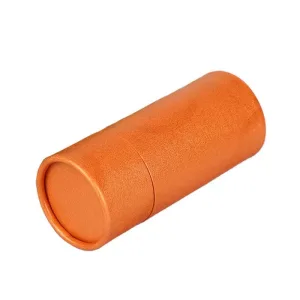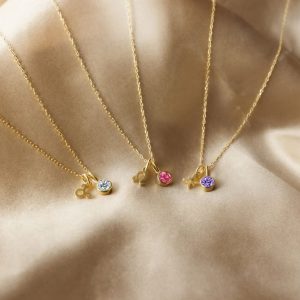Eco-packages bring a solution to environmental problems. Regular packing contributes to 8 million tons of plastic waste each year. It inflicts harm on marine life to a large extent. Eco-packages cut down on plastic usage and attract environmentally conscious consumers. Nowadays, 60% of consumers are concerned about global warming. This trend is growing the market of eco-packages tremendously. It’s expected to grow from $271.86 billion in 2023 to over $393 billion by 2028. Eco-package jewelry companies prove they care and can meet new standards and consumers’ expectations.

Why Sustainable Packaging Matters
A. What is Sustainable Jewelry Packaging?
Sustainable jewelry packaging is a material and organization made to have minimal harm to the planet throughout its entire life cycle, from raw material procurement and production to end-of-life reuse or recycling. It’s not simply about substituting plastic with paper. Rather, it’s circular thinking first off: minimizing resource input, designing to be able to be reused or recycled, and avoiding waste.
Effective sustainable packaging employs several key principles such as sustainable material procurement, functional and lean structural design, and restricted use of multi-layer formats or plastic-based fillers. Rather than being used as a single-use protectant, the package is in a continuous loop—where the end of use is another beginning of use in recycling, composting, or reuse.
This dual perspective is gaining institutional force. In markets such as China and the EU, among many others, legislation has already gone into place to regulate excessive packing, manage void space, and require recyclability, which suggests that environmental design has become essential. Jewelry companies that move ahead of the curve will be better prepared to manage compliance, cost savings, and reputation gain.
B. How Consumer Habits Are Changing
People care more about the planet these days. Younger consumers like Gen Z want green packaging. Green business and ethics are what they want from companies. About 78% of consumers care about sustainability. About 73% will modify their lifestyle to suit the planet. That is why green packaging is crucial.
Packaging becomes public. No longer is it simply protective wrapping—it’s now part of the narrative, part of the process, and increasingly part of the buying decision. Gorgeous, sustainable unboxing is wowing buyers and is another extension of the item.
Social media accentuates this influence. Beautiful, considerate packaging is posted, marveled at, and reposted—especially if it appears to be considerate and reflective of the character of the product. Such brands can organically grow audiences, earn credibility with environmentally conscious audiences, and create more profound emotional loyalty by capitalizing on this moment honestly.
C. Why It’s Smart for Brands
Green packaging provides a positive image for your brand. It makes you appear as a person who loves the earth. According to research, 66% of customers prefer products in green packaging. Some 73% of young adults look for sustainable products. This generates trust and makes your brand more recognizable.
Embracing sustainability in packaging is not only an environmental or ethical choice—it’s also a business decision. Sustainable packaging delivers price resilience, increases perceived product quality, and even reduces costs in the long term. Up to 4 to 7 percent of consumers, research finds, are willing to pay more than 10 percent extra in the form of sustainable packaging.
Economically, sustainable packaging often reduces waste, streamlines logistics, and maximizes material efficiency. Lightweight and minimalist design reduces shipping emissions. Recyclable and reuse design reduces landfill expenses and maximizes circular supply chain efficiency. And with extended producer responsibility measures on the rise in the U.S. and Europe, designing for recyclability reduces future compliance expenses.
Sustainability is yet another key differentiator of the brand. In a crowded, highly visual industry like jewelry, the package is an opportunity to stand out—not simply in attractiveness, but in the communication of long-term responsible stewardship. Consumers are not only buying what the product is, but they are also buying what it stands for.
D. From Waste to Responsibility: Changing Luxury Packaging
Standard jewelry boxes traditionally defined the essence of luxury as extravagance—Rigid boxes, laminate finishes, and multi-piece inserts. Not anymore. Customers are now connecting simplicity, functionality, and sustainability with new standards of sophistication.
Natural finishes and recyclable formats are now favored over laminated finishes or plastic foam, which are seen to be both stylistically and environmentally out of date. Minimal, intelligent packaging raises perceived value and meets contemporary values.
Nowadays, it is not about how much material is used, but about how sensibly the material is selected.
Material Innovation and Selection
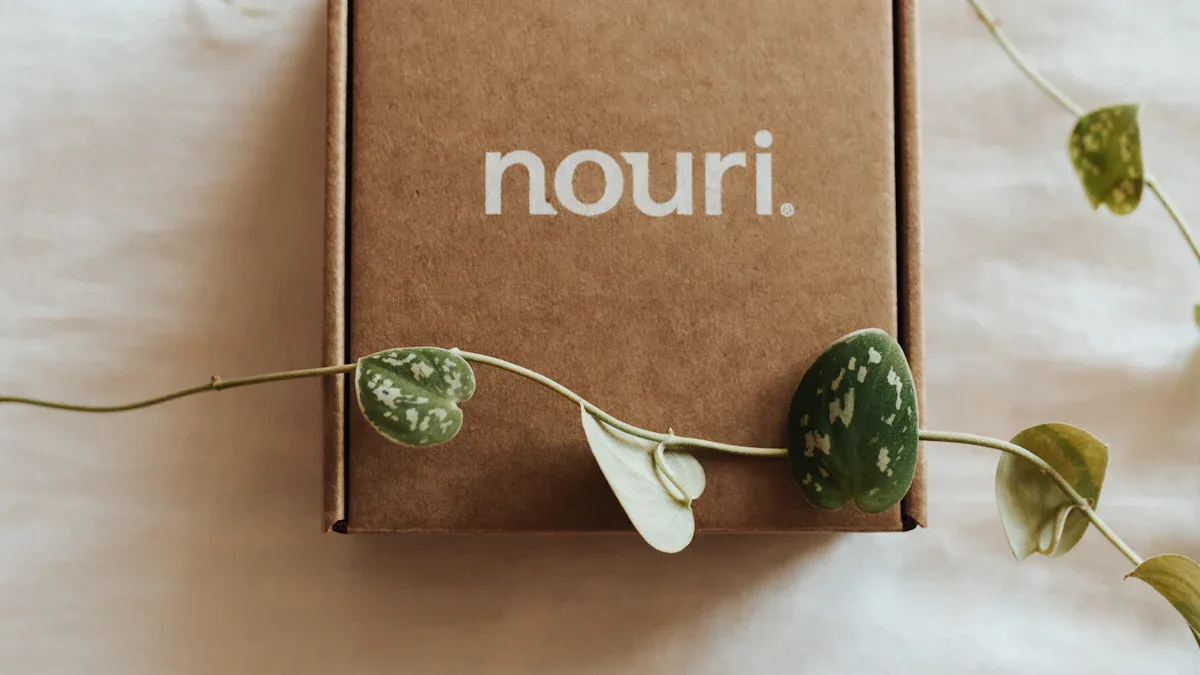
The green package materials that you use to package green jewelry make a difference. These minimize harm to the planet. Choosing wise, green products reflects your business’s care for the planet.
A. Recycled and Upcycled Materials
Recycled materials is based on recyclable content. Recycled paper and cardboard already make up the majority of jewelry boxes, gift bags, and mailing cartons. Most of them now are comprised of 90–100% post-consumer content and provide either environmental or design added values. Recyclable plastics and, in particular, rPET are now also used as structural components like transparent windows or trays with less virgin plastic content.
Upcycling goes one step beyond and makes waste into functional packaging. Fashion industry scraps of fabric can be used to create jewelry bags. It is less wasteful and provides your packaging with that extra touch and handmade feel. Upcycling is said to use 95% less energy than buying new material. It is a smart move if your brand wants to be more sustainable.
B. Biodegradable & Compostable Options
Biodegradable packaging is a great alternative to the traditional material. Bioplastics have gained popularity as alternatives to the standard material in the form of film, tray, and rigid package. Though promising, they require industrial composting facilities to degrade effectively.
Natural fibers such as organic cotton, hemp, jute, and linen are well suited to soft pouches and linings. Natural fibers are biodegradable and renewable and convey the natural, tactile feel that is well suited to handmade or green branding.
Cork, sourced from the bark of the cork tree, offers a biodegradable box or insert solution with a distinct, natural feel. Lightweight yet durable, it contributes to the green and sensory allure of the package.
But they are infrastructure- and consumer-end disposal-dependent. Compostable packaging companies need to provide clear instructions and encourage more efficient use of the existing composting infrastructure in order to secure the environmental benefit they are looking to provide.
C. Next-Gen Biomaterials
New biomaterials are changing how jewelry packaging is made. There’s mycelium (mushroom packaging), seaweed, and agricultural by-products that are all promising options. Mycelium is soft and luxurious to the touch and compostable. Seaweed products grow fast, use minimal resources, and are very green.
Agricultural waste like corn husks or sugarcane fiber are also among the best options. These wastes are turned into recyclable, durable packaging. These fit well with the idea of recycling material in the circular economy. These new types of material protect your jewelry and your green attitude of your business.
Tip: Highlight your use of recyclable and biodegradable products in your marketing. This will be appealing to the environmentally friendly consumers and set your brand apart.
Comparative Analysis of Sustainable Packaging Materials for Jewelry:
| Material Type | Key Sustainability Features | Pros for Jewelry Packaging | Cons/Challenges | Suitability for Jewelry |
|---|---|---|---|---|
| Recycled Cardboard/Paper | High % recycled content (often 90–100% post-consumer), recyclable, often FSC-certified. | Versatile, customizable, good protection, relatively cost-effective, lightweight. | Quality can vary; achieving luxury feel may require careful design/finishing. | Primary boxes, mailers, inserts, tags |
| FSC-Certified Virgin Paper | Sourced from responsibly managed forests, supports biodiversity. | High quality, excellent printability, consistent supply, luxury appeal. | Higher cost than non-certified virgin or some recycled; still uses virgin resources. | Premium primary boxes, gift bags |
| Organic Cotton/Linen/Hemp | Renewable, biodegradable, grown without synthetic pesticides/fertilizers (if GOTS certified). | Soft, luxurious feel, reusable, breathable, natural aesthetic. | Higher cost than conventional textiles, durability may vary, water usage in cotton cultivation. | Pouches, linings, ribbons |
| PLA (Polylactic Acid) Bioplastic | Derived from renewable resources (e.g., cornstarch), industrially compostable. | Clear or opaque options, can be molded, lower carbon footprint than some plastics. | Requires industrial composting (not widely available), potential competition with food sources, can be brittle. | Transparent windows, inserts, thin-film wraps |
| PHA (Polyhydroxyalkanoates) | Produced by bacteria, biodegradable in soil/marine environments. | Broader biodegradability than PLA, less reliant on industrial composting. | Higher cost, currently less scalable than PLA, performance characteristics still evolving. | Films, coatings, potential for molded components |
| Mycelium (Mushroom) Packaging | Grown from agricultural waste & fungi, home compostable, biodegradable. | Highly protective, customizable shapes, lightweight, unique “velvet-soft” texture. | Currently more expensive for small scale, lead times for custom molds, distinct aesthetic may not suit all. | Protective inserts, custom-molded primary packaging |
| Seaweed-Based Materials | Derived from renewable seaweed, biodegradable, some edible/dissolvable. | Reduces plastic waste, innovative, potential for unique textures/properties. | Scalability for non-food items still developing, cost, specific performance for jewelry protection unclear. | Films, coatings, small sachets |
| Cork | Natural, renewable, biodegradable, lightweight, water-resistant. | Unique earthy aesthetic, good cushioning properties. | Can be brittle if thin, cost can be higher than paper-based options. | Cases, inserts |
| Recycled Plastics (e.g., rPET) | Reduces landfill waste, lower carbon footprint than virgin plastic. | Durable, can be clear, familiar properties. | Availability of high-quality food-grade/cosmetic-grade rPET can be limited, recycling challenges persist. | Display components, some types of protective packaging |
D. Balancing Sustainability and Luxury Aesthetics
Sophistication and sustainability don’t have to be mutually exclusive. Material and design ingenuity now make it possible for brands to be both luxurious and sustainable. According to Al Iannuzzi, The Estée Lauder Companies’ sustainability executive, it is possible for luxury brands to use premium sustainable materials while not compromising on design. A prime example is Origins—a Estée Lauder-owned brand—that uses recycled resin in their tubes to illustrate how sustainable beauty packages can be created without compromising on looks. Jewelry brands can draw inspiration from introducing recycled metals, biodegradable components, or compostable pouches to infuse their packages with some form of sustainability.
Their luxury status is now based on thoughtful material choice. Recycled papers now match virgin stock in texture and finish, and new biomaterials like mycelium and seaweed provide both visual impact and environmental benefit. Simple, elegant design in FSC-registered cardboard or organic cloth can be refined, especially with low-impact treatments like embossing or blind debossing.
Growing interest in sustainable luxury, driven by socially responsible consumers and ever tighter regulations, places those brands that adopt premium materials responsibly in the forefront. It is not about compromising on eco-luxury; it is about gaining a competitive advantage.
💡 Tip: Emphasize your package’s environmental credentials in product descriptions. It reflects that you care about quality and the planet and it will resonate with responsible buyers.
IV. Printing & Finishing for Eco-Luxe Appeal
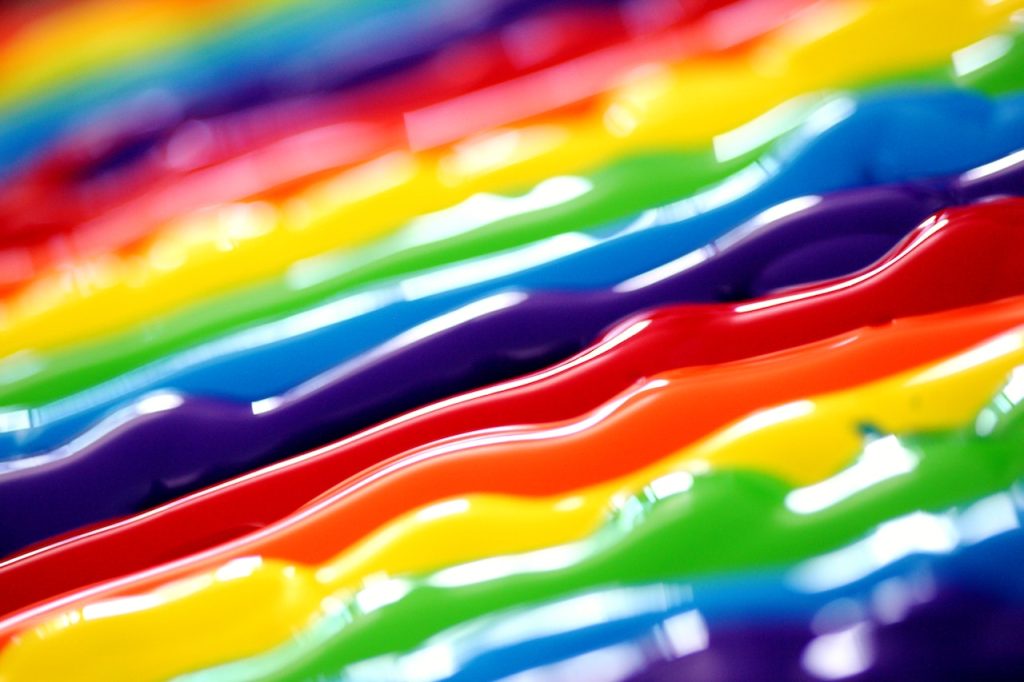
A. Eco-Friendly Ink Technologies
Selecting the appropriate ink saves the planet. Regular inks have chemicals that are not good for the air. Green inks preserve nice and clean work environmentally.
- Algae-Based Ink: A more recent innovation, algae inks are formed from pigments in algae cells. Some are even carbon-negative, since the algae draw CO2 in as they grow. These inks are extremely sustainable in nature, although commercial availability and cost are currently under development.
- Water-Based Ink: These inks consist of water as the primary solvent and possess low VOCs and lesser toxicity than solvent-based inks. These are printed on any substrate, be it paper or cloth, and their adoption is increasing in package printing.
- Soy-Based Ink: These inks are derived from vegetable oils such as soybean, corn, or linseed oil instead of petroleum. These inks are of low VOCs, more easily de-inkable to recycle paper, and possess excellent printing quality. These are used extensively to print on paper and cartons and boxboard.
Printing inks contribute between 1% to 3% to carbon footprints. Yet, more and more companies use green inks, and therefore they are the better option. They minimize wastage and prevent fading of the colors.
B. Sustainable Printing Methods
- Digital Printing: This technology is more environmentally friendly in character in the case of short to medium runs than traditional offset printing. It eliminates printing plates and reduces set-up waste and on-demand printing, both of which curb overproduction. Compostable inks with which digital printing is now possible further contribute to the green credentials of digital printing.
- Letterpress Printing: A traditional method marked by its three-dimensional, debossed look, and letterpress is also a natural alternative to luxury with recycled papers and vegetable inks. The artisanal quality of letterpress is particularly well-suited to luxury jewelry.
- Energy-Efficient Presses: New models are more energy efficient and use less electricity and produce less of the greenhouse gas carbon in the printing process.
These processes assist companies in being eco-friendly when producing customized designs.
C. Finishing with Impact
Finishing touches makes packaging seem luxurious and sustainable. Sensible choices can make it look stylish without harming the planet.
- Eco-Friendly Foils: Traditional foil stamping was based on hard-to-recycle materials. With innovation, more sustainable alternatives in the form of recyclable foils and cold foil processes have been created. The use of small amounts of these sustainable foils can add metallic sheens with little impact on the recyclability of the paper-based package.
- Embossing and Debossing: These techniques both create raised and indented design and pattern on the package surface, providing texture and design with no additional material or inks. More subtle, micro, or sculptured embossing is now the trend, with the natural look of uncoated boards blending with it.
These finishing ideas make packaging both beautiful and eco-friendly.
D. Brand Practices in Print
Brands are coming up with new methods of presenting packaging in a luxurious way yet in an environmentally friendly manner. These efforts provide better-appearing packaging and demonstrate concern towards the planet. These efforts also have a lasting impact on consumers.
Case Studies: Finishing Techniques in Action
- Patagonia: The organization is on the cutting edge of utilizing soy- and algae-based inks on product labels and package materials to set the industry standard.
- MUJI: Employs their “no logo” or minimal printing on unbleached kraft paper to use ink to the minimum by default, as is their overall design philosophy.
Key Takeaways for Your Brand
These are some of the techniques that can make your brand sparkle. Such techniques as embossing, recycled metallic foils, and crisp designs are classy yet green. These techniques add to the prestige of your business, cut down wastage, and attract consumers who care about the planet.
💡 Tip: Inform your readers of your eco-friendly finishing methods. Transparency does much to help build trust and demonstrate your commitment to assisting the planet.
Sustainable Structural Design

A. Simple Designs and Lightweight Materials
Simple packages use less material yet are still appealing. Removing extra layers and big boxes saves resources. It also gives off a streamlined and contemporary look. It helps to cut back on waste and meets the need of green packages.
Lighter-weight packages are also kinder to the environment. Lightweight packages use less shipping power, which equals less pollution. Thinner, yet stronger, cardboard or biodegradable material is the solution. Thoughtful box sizing also minimizes wasted space and fill.
Here are key ideas for simple and light designs:
| Design Idea | What It Does |
|---|---|
| Simple Packaging | Cuts waste by removing extra layers and oversized boxes. |
| Right-Sized Packaging | Uses just enough material to protect items and reduce waste. |
| Lightweight Materials | Uses lighter materials to save energy during shipping. |
| Easy-to-Recycle Design | Makes it simple to separate parts for recycling, helping the planet. |
These tenets make packages functional and sustainable. They also serve to illustrate that your Company cares about the world and intelligent design.
B. Reusable and Multi-Purpose Packaging
Reusable packaging is now something customers can reuse repeatedly. Multi-use boxes or durable bags prevent waste and add value. These kinds of design enable customers to reuse the packaging, extending its lifespan and generating less waste.
For example, bamboo boxes or fabric pouches can store jewelry or small items. Drawer boxes organize accessories for decades. Unboxing is fun and customer loyalty is generated by giving them something practical.
Benefits of reusable packaging include:
- Cutting down on waste and single-use items.
- Making customers happy and spreading brand awareness.
- Offering flexible options like fabric bags or stackable boxes.
Reusable packaging is evidence that you care about the planet. It also makes a lasting impression on your consumers.
C. Flexible and Scalable Packaging
Flexible packages fit various products. Modular designs provide you with the flexibility to design packaging for rings, necklaces, or bracelets. Removable parts provide the versatility of making a box suitable for multiple items. This is cost-saving and waste-free as you avoid having additional designs.
Modular configurations simplify shipping and conserve space and scalable packaging allows growth. Recyclable and lighter weight is more environmentally friendly and cheaper to manufacture in volume.
This is complementary to recycling and waste reduction. Being responsive and flexible with your package minimizes your impact on the world and your business.
Tip: Inform consumers how your package is reusable or can be altered. Consumers like products with creative and environmentally friendly design.
D. Eco-Friendly Inserts
Environmentally friendly inserts are required to protect jewelry and be environmentally friendly. They replace foam or plastic fillers with better environmentally friendly alternatives. These inserts will secure your products and ensure your care of the world.
A great option is molded pulp inserts. Molded pulp inserts are formed from recycled paper or cardboard. The inserts are biodegradable and recyclable. Fragile jewelry is protected and cushioned by them in shipping. Molded pulp is also naturally appearing and compatible with green package themes.
Another thrilling option is inserts in mycelium. These are biodegradable materials that consist of mushroom roots. Mycelium inserts can be molded to fit your jewelry to your specifications. Mycelium inserts keep things in place and provide incredible unboxing experiences. Mycelium breaks down easily without leaving toxic waste.
If you want to produce softness in your inserts, lined versions of them are the best. Organic cotton or organic linen will work well. These are biodegradable and renewable and bring some class to your package in addition to sustainability.
Crinkle or shredded paper is a convenient option. It’s great as a loose filler for cushioning. This paper is easy to recycle and can be made from recycled materials. It minimizes your environmental impact when you utilize it.
Selecting environmentally friendly inserts demonstrates your care to minimize waste. These selections fulfill customer expectation and support your brand image as considerate and responsible.
E. Brand Examples in Structural Innovation
Several jewelry brands are set apart by their cutting-edge, environmentally responsible packaging design. The below instances illustrate how to marry aesthetics, functionality, and passion for the planet.
Mejuri uses refillable cloth pouches with organic cotton. Pouches are also travel-sized and are waste-free. Products are sent in biodegradable mailing bags, illustrating their green credentials.
Bario Neal uses recycled wood packaging, which minimizes waste and gives the products a unique, artistic look. Eco-conscious consumers welcome such thoughtful design.
Tiffany & Co. now incorporates recycled material in their iconic blue boxes. All of their paper components are FSC-certified, attesting to their dedication to responsible sourcing.
These companies demonstrate the use of environmentally friendly packaging. Take them as your guide and protect your jewelry, wow your customers, and work towards saving the planet.
Validating Sustainability: Certifications & Compliance
Now that sustainability is the norm in jewelry, businesses are under increasing pressure to be able to say they are environmentally responsible in a way that is verifiable and credible. Third-party credentials and new regulations are now prized assets—no longer compliance mechanisms, but the vehicles to engender consumer confidence and differentiation in the marketplace.

A. Key Certifications Overview
Third-party certifications define what is “sustainable.” For jewellery companies, the right combinations of such certifications provide credibility and strategic fit with environmentally and socially responsible business operations
- FSC® (Forest Stewardship Council): A widely accepted mark of responsibly sourced paper and wood. FSC-approved packaging—boxes, labels, and displays—assures to be sourced from sustainably managed forests with regard to biodiversity and respect for human rights. The Chain of Custody (CoC) standard offers extra supply chain traceability.
- B Corp Certification: This is a broad certification that assesses your business’s overall social, environmental, and governance impact. Not product-focused, B Corp is evidence of moral integrity and tends to reflect in more sustainable material and supplier choice. The status is highly significant to the values-driven younger consumers.
- Cradle to Cradle Certified™: With regard to circularity of products, the assessment looks at package content in relation to recyclability, material health, and carbon impact. It is forward-looking in anticipating future EU package legislation and enables brands to pre-empt the risk of prospective regulation.
- RJC (Responsible Jewellery Council): Although supply chain ethics is their primary focus, the RJC Code of Practices urges members to have environmental considerations of packaging in mind. RJC compliant companies are expected to manage packaging waste and select material responsibly.
- Fair Trade Certification: More often associated with gold and gemstone origins, Fair Trade standards can also be applied to the use of artisan labor or small-scale production in packaging. This assists in community development and low-impact material usage.
- ISO 14001: This environmental management system (EMS) standard helps brands systematically reduce their environmental footprint—packaging included—as they strive towards ongoing compliance and improvement.
Strategic layering of standards like printing on FSC-allowed paper in the B Corp-certified brand and using Cradle to Cradle design standards provides a layer of sustainability. These standards are not simply descriptors, but rather tools that inform product design, supplier selection, and long-term brand integrity.
Key Sustainability Certifications for Jewelry Packaging:
| Certification Name | Issuing Body | Primary Focus | Relevance to Jewelry Packaging | Key Benefits for Brands |
|---|---|---|---|---|
| Forest Stewardship Council (FSC) | Forest Stewardship Council | Responsible forest management, chain of custody for wood/paper products | Ensures paper, cardboard, and wood components (boxes, tags, displays) are from sustainable sources | High consumer recognition, demonstrates commitment to combating deforestation, enhances brand credibility |
| B Corp Certification | B Lab | Overall social and environmental performance, accountability, transparency | Reflects a holistic brand commitment to ethics and sustainability, which would influence packaging choices | Strong brand differentiation, high consumer trust (especially Gen Z/Millennials), attracts talent, potential for improved financial performance |
| Cradle to Cradle Certified™ | Cradle to Cradle Products Innovation Institute | Material health, product circularity (reuse, recycle, compost), clean air/climate, water/soil stewardship, social fairness | Dedicated packaging certification; ensures packaging materials are safe, designed for circularity, and responsibly made | Demonstrates leadership in circular economy principles, aligns with EU Green Deal, comprehensive assessment of sustainability |
| Responsible Jewellery Council (RJC) | Responsible Jewellery Council | Responsible business practices in the jewelry supply chain (ethics, human rights, environment) from mine to retail | Primarily for jewelry materials, but overall commitment to responsible practices can extend to packaging choices | Industry-specific standard, builds trust in ethical sourcing of jewelry, enhances reputation within the sector |
| Fair Trade Certified™ | Fair Trade USA / Fairtrade International | Fair prices, decent working conditions, community development for farmers and workers, environmental protection | Relevant if packaging includes artisan-made components or if brand’s overall Fair Trade ethos guides sustainable material choices | Strong consumer recognition for ethical sourcing, supports vulnerable communities, appeals to socially conscious consumers |
| ISO 14001 | International Organization for Standardization | Environmental Management Systems (EMS) | Provides a framework for managing and improving environmental performance of packaging manufacturing processes and materials | Demonstrates systematic approach to environmental management, can lead to operational efficiencies, ensures regulatory compliance |
| Global Organic Textile Standard (GOTS) | Global Standard gGmbH | Organic status of textiles, from harvesting of raw materials through environmentally and socially responsible manufacturing | Verifies organic origin of fabrics like cotton or linen used for jewelry pouches or linings | Ensures textile components are genuinely organic and produced responsibly, appeals to health and eco-conscious consumers |
B. Global Regulatory Shifts
Governments throughout the globe are implementing more rigorous regulations to limit package waste and drive circularity. Jewelry companies have to balance international standards and local legislation in areas including material, design, and labelling.
1. EU Packaging and Packaging Waste Regulation (PPWR)
The EU’s PPWR, adopted in 2025 with gradual implementation, imposes broad obligations on all packages put on the EU market:
- Recyclability Standards: Packaging will meet recyclability performance capabilities by 2030, with more strenuous goals in and subsequent to 2038.
- Recycled Content Mandates: Minimum recycled content requirements need to be imposed on plastics (such as 35% by 2030 on plastic packaging in total).
- Waste Reduction Goals: Brands need to minimize package weight, volume, and empty space—no more than 50% total empty space in aggregated or web packaging.
- Reuse Obligations: Certain business types are mandated to implement reuse and refill programs, with possible extension to jewelry transportation package and logistics.
- Substance Restrictions: Prohibiting harmful substances (such as PFAS) and single-use formats that are not essential.
- Standardized Labeling: Recycled content, content, and recyclability will be highlighted by new labeling standards.
Of note: packaging materials that are part of a product’s overall lifetime use (e.g., durable jewelry bags) can be exempted, though brands would need to clearly demonstrate that use intent.
2. U.S. State-Level EPR Laws
In the U.S., Extended Producer Responsibility (EPR) legislation is on the increase on the state level. California, Maine, and the state of Oregon now require brands to finance the collection and recycling of their own package waste.
- Such legislation encourages lighter, recyclable packages containing recycled content, with design tied to cost and compliance.
- A federal bill in waiting—Break Free From Plastic Pollution Act—will institute federal standards nationwide, but until then, brands are faced with the patchwork of different state legislation.
As regulation intensifies and consumers demand increasingly stringent proof of sustainability, compliance is no longer a box to be checked—it’s a pillar of market access and trust. Jewelry brands that get ahead of certificates and anticipate the trajectory of regulation won’t just remain ahead, they’ll cement their status as responsible and forward-thinking leaders.
Implementation Challenges and Solutions

A. Balancing Costs and Benefits
Green packaging can also look expensive to begin with. New research, new machinery, and green materials can initially be more expensive. Adapting to your current methods can even be time-consuming and challenging. These obstacles can eventually lead to savings in the long term.
Reducing material saves money. Smaller and lighter products need less material. It costs less to ship when packages use less space. Compostable and recyclable material saves on waste fees. Your business reaps these cost savings in the long term.
You can charge premium prices for green products. Green products command a premium price from most consumers. Custom packaging that espouses their values makes your brand stand out. This can justify premium pricing and boost your margins.
Begin small to pilot green packaging. Use it on some of your products initially. See how things play out and make adjustments where needed. This leaves you with minimal risk and allows you to grow your green efforts.
B. Keeping Your Brand’s Style
Your packaging is your company’s face. Green redesign might have you worried about losing your upscale look. But smart choices can make your business even more impressive.
Customers now want brands to be kind to the planet. Using products like FSC paper or mushroom-based inserts sends the message that they care. Natural texture and simple form with clean lines look luxurious and waste nothing. These are the ideals that consumers want—luxury that is kind to the planet.
Let everyone hear about your green packaging. Talk about it on social media or in your shops. Inform them about how your materials are kind to the planet. Trust and like-minded buyers need to know.
Work with designers to combine style and sustainability. Add features like embossing or glossy recyclable foil to create a rich texture. Thoughtful design provides your brand with a premium edge without compromising on green credentials.
C. Growing Green Packaging for All Sizes
It isn’t always simple to incorporate green packaging—especially if you are producing enormous amounts of products or dealing with several other businesses. Small jewellery companies and large multinational companies struggle to expand their green efforts.
Getting Enough Materials
Some of our sustainable products are new and therefore not in large supply yet. They can be more expensive than standard packaging or take longer to arrive with you, especially with large shipments.
Changing How Things Are Packed
New packaging typically implies that how you package and send things will be different. Brands can streamline things by making the sizing more standardized, pre-assembling parts of the package, and employing simple-to-follow instructions to help teams move faster and more evenly.
Offering Different Levels of Packaging
Not everyone needs to be packaged in luxurious boxes. Companies can use more elegant packaging on premium items or gift sets and more straightforward environmentally friendly packaging on everyday items. Adding small touches—like recycled paper wraps or stickers—can personalize the package without consuming too many resources.
Working with the Right Suppliers
Having access to sources of sustainable packaging can be very effective. These sources provide quality, reasonable prices, and stable supply even in large quantities.
Making It Easier for Small Brands
As more environmentally friendly packaging is available in standardized dimensions and formats, small brands are more and more able to join in. Pre-made packaging makes small companies look professional and sustainable while not investing heavily in bespoke designs.
D. Avoiding Greenwashing
Greenwashing hurts your brand and erodes customers’ trust. Greenwashing is what happens when companies deceive or exaggerate about their environmental claims. To avoid this, be sure your claims are honest and clear.
1. Be Clear and Honest
Steer clear of generic terms like “green” where you don’t have concrete evidence. Be specific instead. Say your boxes are constructed from 100% FSC-certified recycled paper or your inserts are home-compostable mycelium-based products. Being specific builds customer trust.
💡 Tip: Share numbers. For example, “Our packaging cut plastic by 80% this year.”
2. Use Trusted Certifications
Gaining known and credible certification such as FSC for paper, GOTS for organic textiles, or B Corp certification of business operation overall gives third-party verification of a brand’s actions. Placing those labels on your packaging tells your customers that you’re genuine.
3. Teach Your Customers
Make it simple for the customer to recycle or reuse your package. Add instructions or a QR code to watch instructions or a web page. It reduces waste and demonstrates your concern for the planet.
4. Don’t Focus on Just One Thing
Do not advertise one green quality and leave out the rest. To state your package is “biodegradable” and not specify that it is biodegradable only in special compost is misleading consumers. Advertise both the benefit and the drawback of your package.
| Do | Don’t |
|---|---|
| Give clear, specific details. | Use unclear words like “eco-friendly.” |
| Show certifications. | Skip proof of your claims. |
| Explain how to recycle or reuse. | Assume people already know. |
5. Be Open and Honest
Be honest. Inform your consumers how your work is progressing, even if you are still developing. Consumers appreciate brands that make an effort and are honest.
Note: Green claims cannot be lied about. The EU Green Claims Directive and other legislations insist on evidence to back environmental assertions. Being truthful keeps your business secure and trustworthy.
By following these recommendations, you can earn trust, establish your brand’s credibility, and attract those who care about the planet. Authenticity is always the best.
The trend towards sustainable jewelry packaging is taking hold fueled by changing consumer values, growing industry regulations world-wide, and the understanding that taking care of the world is the key to enduring business success. Once voluntary—recycled content, green printing, designing to reuse—is now essential to jewelry companies of today.
Not only is it the right thing to do—it’s also good business. Sustainable packaging reinforces trust, resonates with younger and values-driven consumers, and sets brands apart in a crowded marketplace. There are still challenges, but ongoing innovation and industry collaboration continue to create new opportunities.
Lastly, sustainable packaging is not something you arrive at, it’s something you work towards. Those who lean in with intention, embrace evolution, and invest in thoughtful design not only will reduce their impact, but also lead the way towards a more forward-looking, sustainable jewelry industry.
FAQ
1. What is sustainable jewelry packaging?
Sustainable jewelry packaging uses eco-friendly materials like recycled paper or organic fabrics. It helps the planet by reducing waste and staying functional. This type of packaging also looks nice and matches what today’s shoppers want.
2. Why should jewelry brands switch to eco-friendly packaging?
Eco-friendly packaging cuts waste, lowers pollution, and meets customer demands. It also improves your brand’s image and follows new environmental rules. Using it shows you care about the Earth and ethical practices.
3. Are sustainable materials durable enough for jewelry packaging?
Yes, materials like FSC-certified cardboard and recycled metals are strong. They protect jewelry well and are tested to meet packaging needs. These options are both durable and better for the environment.
4. How can I educate customers about recycling my packaging?
Add instructions or QR codes to explain how to recycle your packaging. Share tips on your website or social media to teach customers. This shows your brand cares about helping the planet.
5. Can sustainable packaging still look luxurious?
Yes! Recycled paper with fancy textures and biodegradable fabrics look great. Simple designs with embossing or shiny, recyclable finishes can feel premium. You can stay stylish while being green.
6. What certifications should I look for in sustainable packaging?
Look for certifications like FSC for paper and GOTS for fabrics. These labels prove your packaging is eco-friendly and trustworthy. They help build confidence with buyers who care about the planet.
7. Is sustainable packaging more expensive?
At first, it might cost more because of new materials. But it saves money by cutting waste and shipping costs. Many shoppers will pay extra for green products, making it worth the investment.
8. How can small jewelry brands adopt sustainable packaging?
Start small by using recyclable or reusable materials. Work with suppliers who offer eco-friendly options in smaller amounts. Modular designs can save money and work for different products.





